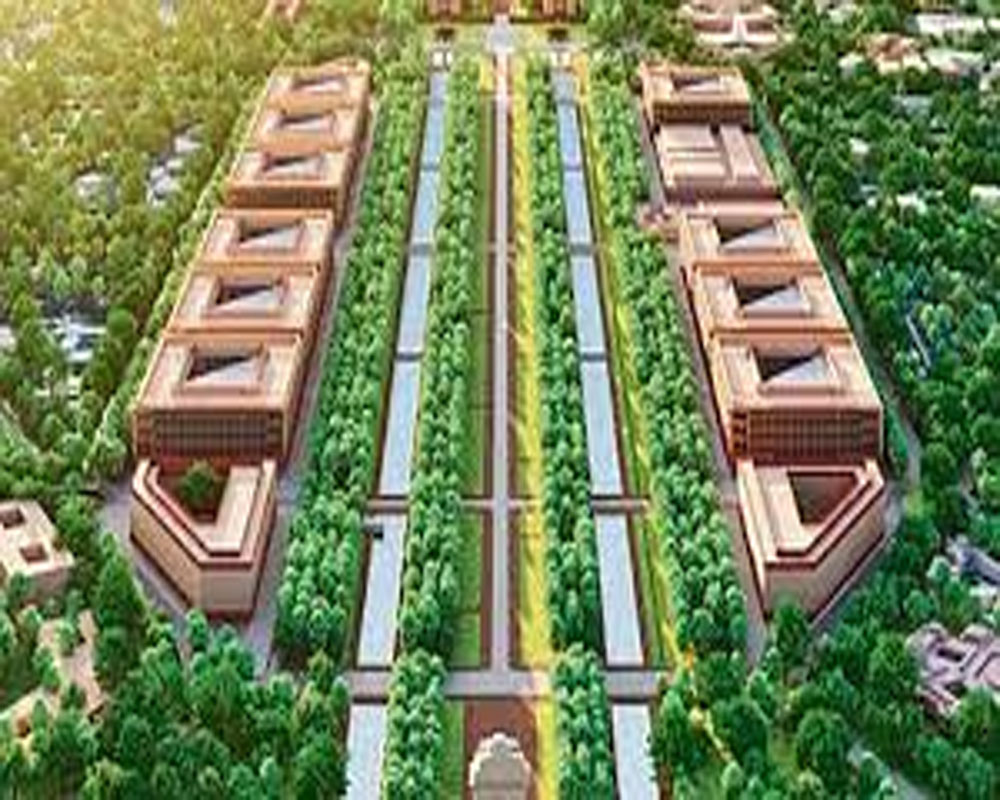SC reprimands Govt for aggressively pushing Central Vista project, withholds construction
Is building a citadel as testimony to one’s transformative legacy and power so important when the nation is going through its worst crisis brought on by the pandemic? Or is considered and reasoned opinion now a dispensable ritual in the rush to tick the boxes of jobs done, good or bad? May be the Narendra Modi Government thinks that it can make its priorities the nation’s own, ignoring reality. So the Supreme Court pressed the much-needed pause button yesterday, literally rebuking the Government for “moving forward aggressively” on Delhi’s Central Vista project, even before a decision could be taken on a slew of petitions challenging it. And though it allowed Modi to lay the foundation stone for the project, it categorically ruled out any construction or demolition in the demarcated area or any cutting of trees, the last so not advisable in a climate-challenged city like Delhi. The Government has justified the Rs 1,000 crore project, that provisions for a new Parliament building and a do-over of the Central Vista, on grounds of adapting to the requirements of changed times. But the top court sensed the Government’s real intent of making a power statement and curbed the adventurism, saying, “Just because there is no stay, does not mean you can start construction. We did not pass any clear stay order because we thought you are a prudent litigant, and you will show deference to the court.” When Government counsel Tushar Mehta sought time to respond to the court’s order that no construction or demolition could continue, the court insisted that he reply in five minutes on compliance. To that extent, the court played conscience keeper and made it amply clear that runaway ambitions could not be allowed to have their way when the timing and the spends are clearly inappropriate. It underlined that just because the Government considered its authoritarian and signature move as important, everybody shouldn’t agree and fall in line.
The real intent of the argument that Lutyens’ Delhi needs a makeover, particularly the Central Vista of the Rajpath, to create more spaces for a more streamlined operation of Ministry offices and freeing up more citizen-friendly spaces, is entirely political and in no way cultural or futuristic. It is quite unlike the French experiment with the Louvre though parallels have been drawn to it. When the glass Pyramid came up in the courtyard of the museum, ostensibly to free up spaces for an easier visitor movement, the then French President Francois Mitterrand was lambasted for creating “an architectural joke, an eyesore, an anachronistic intrusion of Egyptian death symbolism in the middle of Paris and a megalomaniacal folly.” The oddity of its existence was such that critics and conservationists compelled the architects to tone down on drama, keep much of the rejig of the Louvre’s internal map underground and stay away from the surrounding classical architecture. Of course, Mitterrand, an avid art lover, was thinking about keeping the Louvre relevant for generations than sealing a political legacy. Here, it is the latter taking precedence. The Government’s move is about overwriting history with its own. Yet tradition’s co-existence with modernity is encoded in our DNA and Delhi is the best testimony, where each successive ruler has sedimented through relics and monuments that have stood the test of time. And Delhiites have never denied heritage its place, be it Rajput, Islamic, European or colonial, making it a part of their living history, one where Lutyens’ Delhi is a key chapter. And no argument holds before the elegance and classicism of the design — the green pavilions, perches, cupolas and the islands are the only democratic spaces where citizens can move and roam free, catching the afternoon sun in the middle of winter and the gentle breeze of a summer evening. No kiosk and retail space is needed here for it is precisely to escape those that Delhi families assemble here. Besides, being the first stretches to be locked down for security around Republic Day and Independence Day, they are anyway sanitised and cannot ever be a porous event space like Washington’s National Mall. Redevelopment wouldn’t mean more freedom to the masses. Considering the India Gate and now the war memorial respects martyred soldiers no less, do we need to scream our triumphalism and identity any louder? Shouldn’t the Government be wiser to leave a legacy of policy and governance instead? Repurposing or modifying administrative offices within the shell of an existing facade and rejigging interiors are the done thing. But to change the skyline is quite the other. Agreed, there may be an increasing demand for land in the cities and the size of the Government means that its bureaucracy needs to be accommodated. Question is why can’t they be relocated to a space where vertical growth is possible. The Rajpath has been our ceremonial pivot, providing a monumental, dignified and symbolic setting for governmental structures, museums and national memorials. Attempting to change it for no pressing reason, therefore, is like marginalising and eroding its place-based identity. Simply because of its historicity as a power statement. One that the current regime wants to overlay with its own definition of a monolithic and a neo-cultural India, as if we never had roots through millennia. Prime Minister Narendra Modi doesn’t quite like the “Lutyens’ world” and the power structures and codes embedded in it. But in the name of breaking elitism and freeing up space for people, one cannot justify political point-scoring. There are fruits of preservation; they serve as reminders of what was and where we need to go. There are only ruins of demolition, forcibly reconstructing the past to suit our ends. Besides, no amount of overwriting can erase the imprint of the city in our hearts. In the end, Delhi’s soul gets damaged.


























